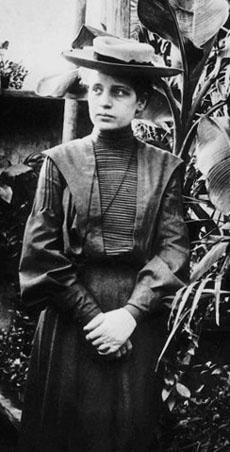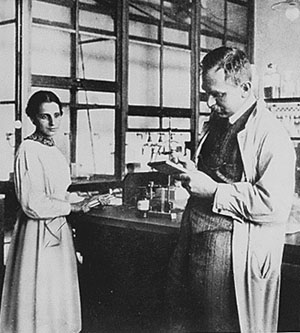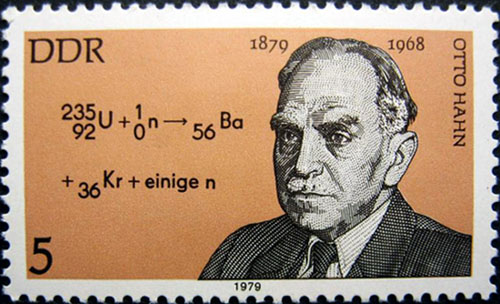Meitner and Hahn
Today, Meitner and Hahn, an odd couple. The University of Houston's College of Engineering presents this series about the machines that make our civilization run, and the people whose ingenuity created them.
Lise Meitner's and Otto Hahn's names are interwoven. The collaboration of these two great physicists was intense and prolific. They worked together for decades. Yet they kept their distance -- they never so much as had dinner together.
 Meitner was born in Austria in 1878, Hahn in Frankfurt, four months later. And she died at almost ninety, just three month after he did. They first met in Berlin in 1907. By then, she had her physics doctorate and was working with Max Planck on questions of radiation. Hahn had recently joined the university after studying chemical physics in London for two years.
Meitner was born in Austria in 1878, Hahn in Frankfurt, four months later. And she died at almost ninety, just three month after he did. They first met in Berlin in 1907. By then, she had her physics doctorate and was working with Max Planck on questions of radiation. Hahn had recently joined the university after studying chemical physics in London for two years.
Meitner was Jewish, but raised Protestant. For the time, that mattered little, and Germany had a history of treating women better than other countries. When Hitler came to power, in 1933, she was the long-time head of physics at the Keiser Wilhelm Institute. Hahn was professor of physics at the University of Berlin. He focused on chemical structure, she on radiation and atomic decay. These interconnected subjects, bound the two people together.
Then the Nazis came and Hahn wanted nothing to do with them. He refused to join the party and resigned his post at Berlin. But then he was then made interim head of the Keiser Wilhelm Institute "until a loyal Nazi could be found to take over."
 In 1938, it fell to him to fire Meitner since she was Jewish. They agreed that she had to get out, though she had no passport. He gave her a diamond ring to hock if she became strapped for funds; and she escaped to Sweden through Holland.
In 1938, it fell to him to fire Meitner since she was Jewish. They agreed that she had to get out, though she had no passport. He gave her a diamond ring to hock if she became strapped for funds; and she escaped to Sweden through Holland.
Then came Meitner's greatest accomplishment: Hahn wrote to her saying he was baffled by his finding that radium decayed into barium. It made no sense. Meitner's nephew, Otto Frisch, a physicist working with Niels Bohr in Copenhagen, was visiting her in Sweden. So she said, let's go walk in the snow. They walked, talked, and together solved the puzzle: The atom must be fissioning apart, with a huge release of relativistic energy. Their discovery sent out shockwaves even before it was published. The atomic age had begun.
After that, the allies wanted to smuggle Meitner out of from Sweden to work on the bomb in America. She would have none of that. And Hahn walked a tight rope. He had to suppress Meitner's name, since even mentioning her would cost him his scalp. In the end, he got the Nobel Prize while she and Frisch did not. She took it graciously, but much of the physics community was outraged.
Her anger was focused elsewhere. As the concentration camps came to light, she sent Hahn a letter: "You all worked for Nazi Germany ... Certainly, to buy off your conscience you helped a persecuted person here and there, but millions [were] murdered without any kind of protest." The letter was never delivered; the friendship never fractured. And we're left weighing the old and terrible question of moral responsibility in the face of creeping evil?
I'm John Lienhard, at the University of Houston, where we're interested in the way inventive minds work.
I. James, Remarkable Physicists. (Cambridge: Cambridge Univ. Press, 2004), pp., 234-247.
R. L. Sime, Lise Meitner: A Life in Physics. (Berkeley: University of California Press, 1996).
P. Rife, Lise Meitner and the Dawn of the Nuclear Age. (Boston: Claasen, 1990.1992)
(Also useful is the Dictionary of Scientific Biography entry which was written by none other than Otto Frisch.)
All images courtesy of Wikipedia. See also Wikipedia biographical material on all the people mentioned here.

Hahn on a 1979 German stamp.